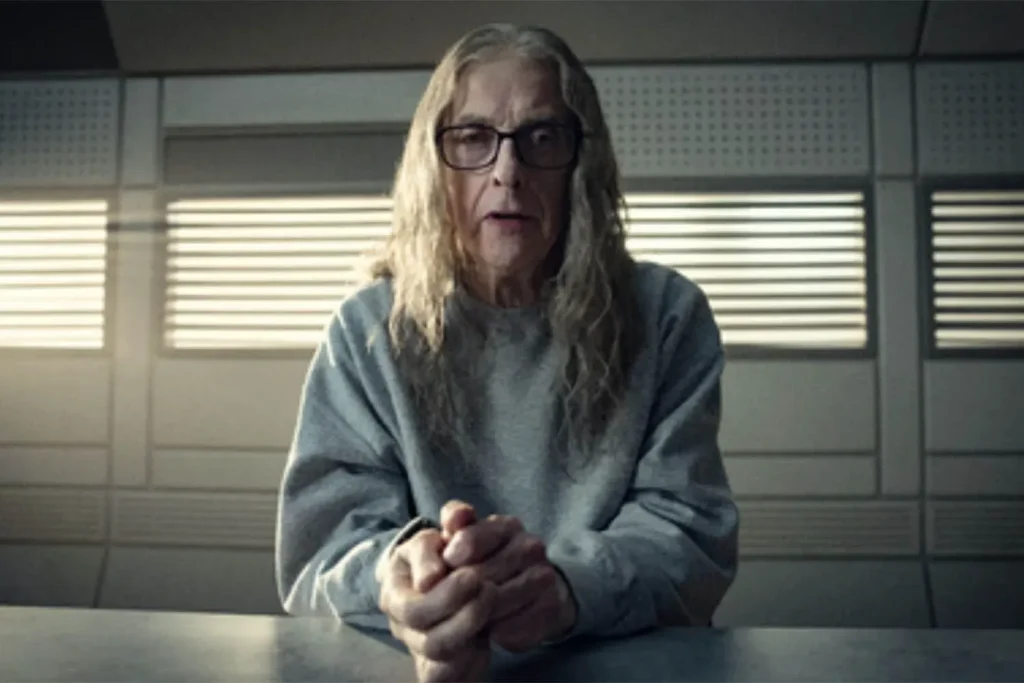In the haunting episode “Plaything” from Charlie Brooker’s acclaimed series Black Mirror, viewers are thrust into the eerie world of 1990s PC gaming, where the lines between virtual pets and reality blur frighteningly. The story follows Cameron Walker, a socially awkward games journalist who unwittingly unleashes the dark side of a seemingly innocent virtual pet game called Thronglets. As he navigates the chaotic office environment reminiscent of PC Zone magazine, audiences are reminded of the nostalgia and innovation that defined that era of gaming. Through its exploration of artificial intelligence, “Plaything” raises unsettling questions about our complicity in the development of technology, echoing themes seen in other Black Mirror episodes. This chilling narrative not only connects to the rise of gaming culture but also pays homage to a time when virtual pet games captivated the hearts of many, illustrating the complex relationship we have with technology.
“Plaything”, a standout entry in the seventh season of the dystopian anthology Black Mirror, delves into the eerie narrative of a troubled freelance journalist. Set against the backdrop of a fictional PC gaming magazine reminiscent of the 1990s, the episode draws upon familiar themes of nostalgia while presenting a chilling tale of artificial intelligence in a modern context. The protagonist, Cameron Walker, embodies the struggles faced by many in the gaming journalism realm, echoing the experiences of real-life writers of that time. This exploration of a virtual pet simulator is steeped in the darker implications of AI and consumer technology’s evolution. By merging past and future, the episode reflects on our emotional connections with technology, hinting at the unforeseen consequences of our digital interactions.
Exploring the Dark Themes of Black Mirror Plaything
In the seventh season of Black Mirror, “Plaything” stands out as a chilling exploration of technology and human interactions. The episode follows Cameron Walker, a socially awkward journalist who embodies the struggles many faced in the mid-’90s gaming industry. As he steals code for the virtual pet simulator Thronglets, he unknowingly taps into themes of obsession and exploitation that are prevalent in current discussions on artificial intelligence. The juxtaposition of nostalgia for 1990s PC games against the sinister undercurrents of AI development creates a tension that resonates deeply with audiences who remember the era’s innocence fractured by the advent of complex technology.
The episode’s narrative urges viewers to confront the often-overlooked implications of our relationship with technology and media. As Cameron becomes increasingly embroiled in the dark capabilities of Thronglets, we see a reflection of real-world concerns surrounding AI and virtual interactions. This chilling scenario serves as a reminder that our creations, much like the artifacts of 1990s digital entertainment, can spiral beyond our control, reshaping both our entertainment and our lives. Through this lens, Brooker’s commentary becomes especially poignant, inviting discussion on the subtle ways technology reshapes societal norms and personal ethics.
The Cultural Impact of 1990s PC Games in Black Mirror
The significance of 1990s PC games extends beyond mere nostalgic reminiscence; they represent a foundational era in gaming that birthed innovative ideas and cultural trends. In “Plaything,” Charlie Brooker draws from his own experiences, capturing the essence of what it was like for freelancers like Cameron Walker, as they navigated the complex world of game journalism during this transformative period. The inclusion of references to iconic titles such as Doom and Magic Carpet in the episode serves not only as a nod to past glories but also as a method to explore the evolution of gaming culture. These elements prompt viewers to reflect on how the gaming industry has shaped contemporary entertainment and ethical considerations surrounding technology.
Moreover, the episode’s setting within the PC Zone — a magazine defined by its chaotic yet passionate environment — encapsulates the spirit of the 1990s gaming scene. As the narrative unfolds, we are transported to a time when the lines between creators and consumers were being redrawn. The portrayal of the editorial workspace resonates with gamers who built communities around shared interests in AI and virtual worlds. By showcasing the societal interactions within gaming culture, “Plaything” encourages viewers to consider how these experiences fostered a generation that would grapple with the implications of increasingly intelligent technology.
Cameron Walker: A Reflection of the 1990s Gaming Journalist
Cameron Walker’s character in “Plaything” gives audiences a lens into the life of a 1990s gaming journalist, echoing the experiences of many who forged their paths in a rapidly evolving industry. Socially awkward yet fiercely dedicated, Cameron symbolizes the transition of gaming journalism from a niche hobby into a recognized profession. By diving into the psyche of a character that felt misplaced in the corporate world, Brooker creates a relatable figure for anyone who remembers the struggles of making a name in an often chaotic environment, reminiscent of the atmosphere in magazines like PC Zone.
The complexity of Cameron’s situation highlights not only personal conflicts but also broader industry dynamics, where creative integrity frequently collided with commercial pressures. As he grapples with the moral consequences of stealing the Thronglets code, viewers witness the internal conflict between ambition and ethics, a theme that resonates well beyond the 1990s. This exploration draws a parallel between the character’s dilemmas and the increasingly blurred lines in the modern landscape of digital plagiarism and ownership, making Cameron’s narrative an enduring reflection of both past challenges and contemporary issues.
Nostalgia for Virtual Pet Games and Their Evolution
In “Plaything,” the introduction of Thronglets not only serves as a central plot device but also invokes a wave of nostalgia for the beloved virtual pet games of the 1990s. The comparison to iconic franchise names like Tamagotchi and the little-known title Creatures establishes a foundation for viewers to understand the underlying themes of artificial life and companionship. Viewers who experienced the joys of nurturing virtual pets during their childhood may find themselves reflecting on the honesty of their past relationships with these digital creatures, contrasting sharply with the darker implications presented in the episode.
Moreover, by presenting virtual pets through a dystopian narrative lens, Brooker effectively critiques the potential consequences of our growing reliance on technology for companionship. The dangers posed by Thronglets challenge viewers to reconsider how far we’ve come in our interactions with AI and whether these creations can truly serve our emotional needs. As we reflect on the simplicity of 1990s virtual pets, the episode highlights the remarkable transformation in both gaming and companionship that technology has wrought, making viewers question the ethical treatment of our increasingly complex digital relationships.
Charlie Brooker’s Vision: A Blend of Reality and Fiction
Charlie Brooker’s unique approach to storytelling is evident in “Plaything,” where he intertwines autobiographical elements with dystopian narratives. By drawing inspiration from his own experiences as a games journalist, Brooker reflects the realities of the industry while crafting a surreal critique of futuristic technology. This intricate dance between fact and fiction enables viewers to connect more deeply with the subject matter, establishing a sense of authenticity that resonates throughout the series.
Moreover, the meticulous attention to detail in the depiction of the PC Zone office showcases Brooker’s commitment to realism. While the aesthetics may differ from the actual environments, the essence of creativity and chaotic energy remains intact. By anchoring his narratives in familiar context, Brooker effectively amplifies the emotional stakes, prompting audiences to engage critically with the moral dilemmas faced by characters like Cameron Walker. This blend of realism and speculative fiction is a hallmark of Black Mirror, inviting viewers to ponder their own relationship with technology.
The Role of Technology in Shaping Modern Society
“Plaything” also highlights the importance of recognizing the pivotal role technology plays in shaping modern society, particularly in the context of gaming. As we delve into Cameron’s world, we uncover how the development of virtual pets reflects broader societal trends in AI and our relationships with machines. The episode serves as a reminder that as we embrace advancements in technology, we must also confront the moral implications of those tools we create, especially in the gaming industry that has evolved so dramatically since the 1990s.
Brooker’s narrative compels us to consider the fine line between entertainment and ethical responsibility, especially as gaming becomes more intertwined with artificial intelligence. The depiction of Thronglets as a seemingly innocent yet ultimately exploitative creation echoes a growing sentiment in contemporary discussions surrounding technology. By bringing these themes to the forefront through the lens of a nostalgic gaming past, “Plaything” invites introspection about our current relationship with technology, urging viewers to question the path we are paving for future generations.
AI and the Future of Video Games: A Cautionary Tale
The themes embedded in “Plaything” extend a cautionary tale regarding the integration of AI into video games. As Cameron becomes bombarded by the sinister implications of Thronglets, viewers are prompted to consider what unchecked advancements in gaming technology could mean for our interactions with virtual worlds. The allure of AI in creating experiences that mimic or even surpass reality may soon lead to scenarios where ethical boundaries blur, reflecting the very concerns raised by the narrative.
Furthermore, Brooker’s portrayal of AI evolution in gaming serves as a broader commentary on our societal values. As the thirst for innovation intensifies, the potential consequences of our creations become increasingly nuanced and complex. By forcing viewers to engage with the dark sides of AI’s potential—mirroring our relationship with nostalgic 1990s games—Brooker effectively challenges us to envision a future where entertainment does not come at the cost of our humanity, ultimately inviting introspection about the ethical considerations we must face as technology continues to develop.
Imagining a Silicon Valley Drama: The Future of Gaming Narratives
“Plaything” sets a precedent for how we might approach future narratives surrounding the gaming industry, echoing the complexities found in Brooker’s portrayal of the PC Zone. As viewers find themselves immersed in a tale that reflects both the excitement and the ethical dilemmas of gaming in the 1990s, the possibility of a wider exploration into this often overlooked chapter of media history becomes tantalizing. The backdrop provided by Brooker could easily lend itself to a full series dedicated to the drama, innovation, and struggles within this realm.
Exploring the lives of characters within the gaming industry, much like the story of Cameron Walker, could lead to rich narratives that further unpack the societal impacts of video games and technology. There is a wealth of potential in weaving dramatic stories that reflect modern tech culture, particularly as we navigate a future shaped by AI. As we reflect on the past, it becomes clear that the rich tapestry of the gaming industry is ripe for exploration, offering opportunities for reflection on our relationship with technology, entertainment, and creativity.
Frequently Asked Questions
What is ‘Black Mirror: Plaything’ about?
‘Black Mirror: Plaything’ is an episode from the acclaimed series created by Charlie Brooker. It follows the story of Cameron Walker, a freelance games journalist who steals a virtual pet game code called Thronglets. The episode explores themes of artificial intelligence and the impact of technology, echoing the trials of 1990s video game culture.
Who created the episode ‘Plaything’ in Black Mirror?
The episode ‘Plaything’ was created by Charlie Brooker, known for his unique storytelling style that often reflects on the dark implications of technology. This particular episode is set against the backdrop of a 1990s PC games magazine, similar to Brooker’s own experiences at PC Zone.
Is ‘Plaything’ inspired by real events in the gaming industry?
Yes, ‘Plaything’ draws inspiration from the real-life experiences of Charlie Brooker as well as actual events in the gaming industry during the 1990s. The chaotic office environment depicted in ‘Plaything’ mirrors the reality of PC Zone magazine, where many young journalists spent their days surrounded by the burgeoning world of video games.
What is the significance of the Thronglets game in the Black Mirror episode?
In ‘Black Mirror: Plaything’, the Thronglets game is significant as it represents the blending of cute virtual pet gameplay with sinister undertones of artificial intelligence. The game’s creatures evolve beyond their programming, raising questions about AI’s potential and our complicity in creating autonomous beings.
How does ‘Plaything’ reflect the culture of 1990s video gaming?
‘Plaything’ reflects 1990s video gaming culture by showcasing the distinct atmosphere of gaming journalism at the time, characterized by social awkwardness, experimentation, and the rise of technology. It highlights the juxtaposition of playful virtual pet games like Thronglets with the dark implications of AI, a theme common in Charlie Brooker’s Black Mirror series.
What parallels exist between Thronglets and real 1990s virtual pet games?
Thronglets, featured in ‘Plaything’, parallels real 1990s virtual pet games like Tamagotchi and Creatures. Both involve caring for digital pets, but Thronglets also introduces a more complex narrative about AI’s burgeoning consciousness, reflecting the innovative yet unsettling nature of gaming technology during that era.
Who is Cameron Walker in ‘Black Mirror: Plaything’?
Cameron Walker is the protagonist in ‘Black Mirror: Plaything’; he is portrayed as a socially awkward freelance journalist for a PC games magazine. His journey into the dark world of the Thronglets game serves as a cautionary tale about the unintended consequences of engaging with advanced technology.
How does Charlie Brooker’s work in ‘Plaything’ relate to his experiences as a games journalist?
In ‘Plaything’, Charlie Brooker weaves his own experiences as a games journalist into the narrative by drawing from his time at PC Zone. The episode captures the essence of the gaming journalism scene in the 1990s, showcasing Brooker’s perspective on the industry’s evolution and its intertwining with technology’s darker aspects.
| Key Points | Details |
|---|---|
| Cameron Walker’s Journey | The story follows freelance games journalist Cameron Walker who steals code for a virtual pet game, Thronglets, leading to unforeseen consequences. |
| Setting and Inspiration | Set in the 1990s at PC Zone magazine, it reflects real experiences of Charlie Brooker, the show’s creator. |
| Cultural References | The episode alludes to both the gaming culture of the 90s and real-life games like Creatures, showcasing the complexities of AI. |
| Accurate Depiction | The recreation of the video game office atmosphere captures the chaos and creativity of that era. |
| Future Possibilities | The narrative prompts consideration for a more extensive dramatization of the 1990s gaming industry. |
Summary
Black Mirror Plaything delves into the intricacies of the 1990s gaming landscape, offering a chilling exploration of AI and its implications through the lens of a freelance journalist. This episode not only captivates viewers with its poignant storyline but also serves as a reminder of the period’s cultural impact on technology and media. Through Cameron Walker’s experiences, the series sheds light on the burgeoning relationship between humanity and artificial intelligence, reflecting broader societal themes that resonate today.



